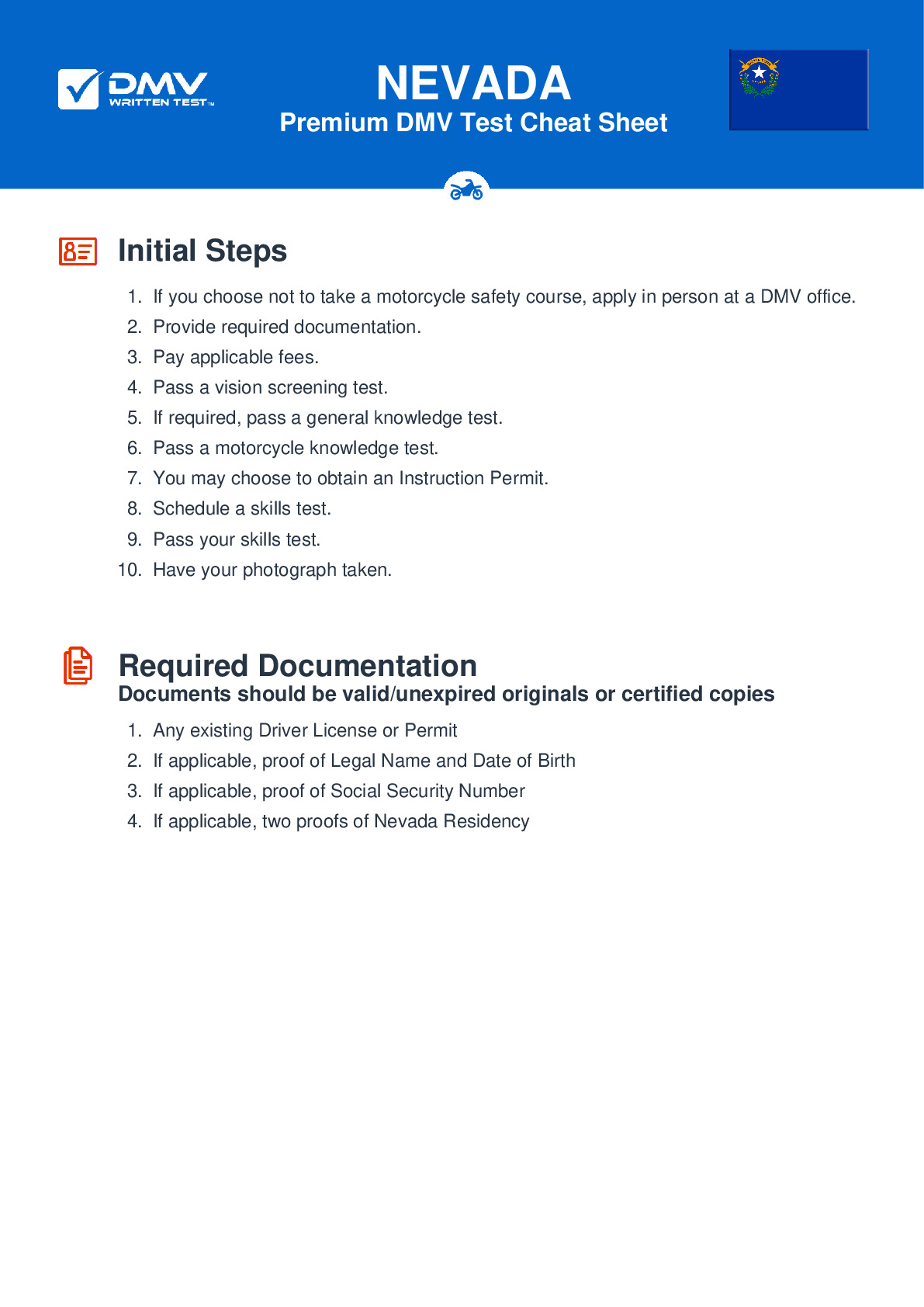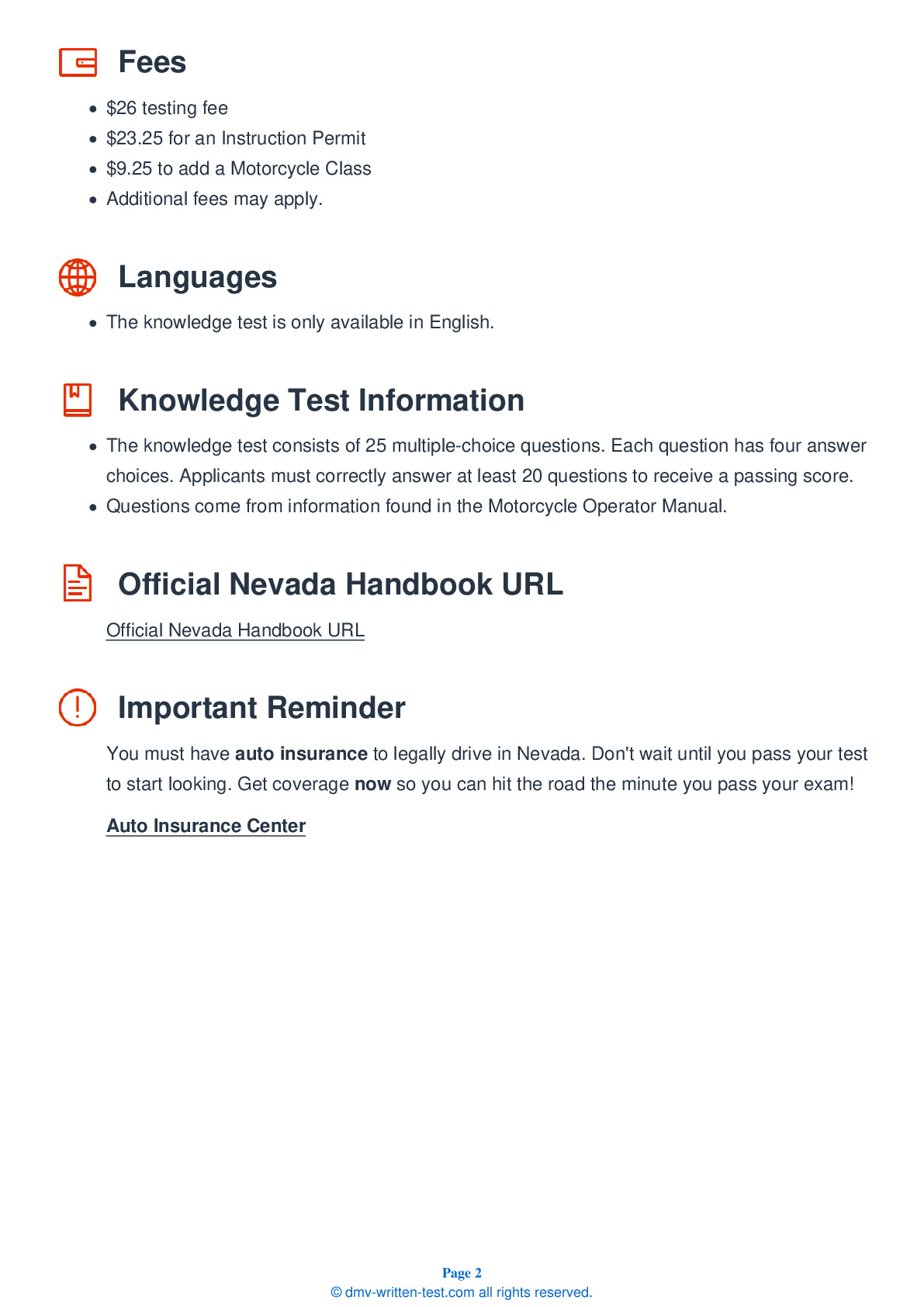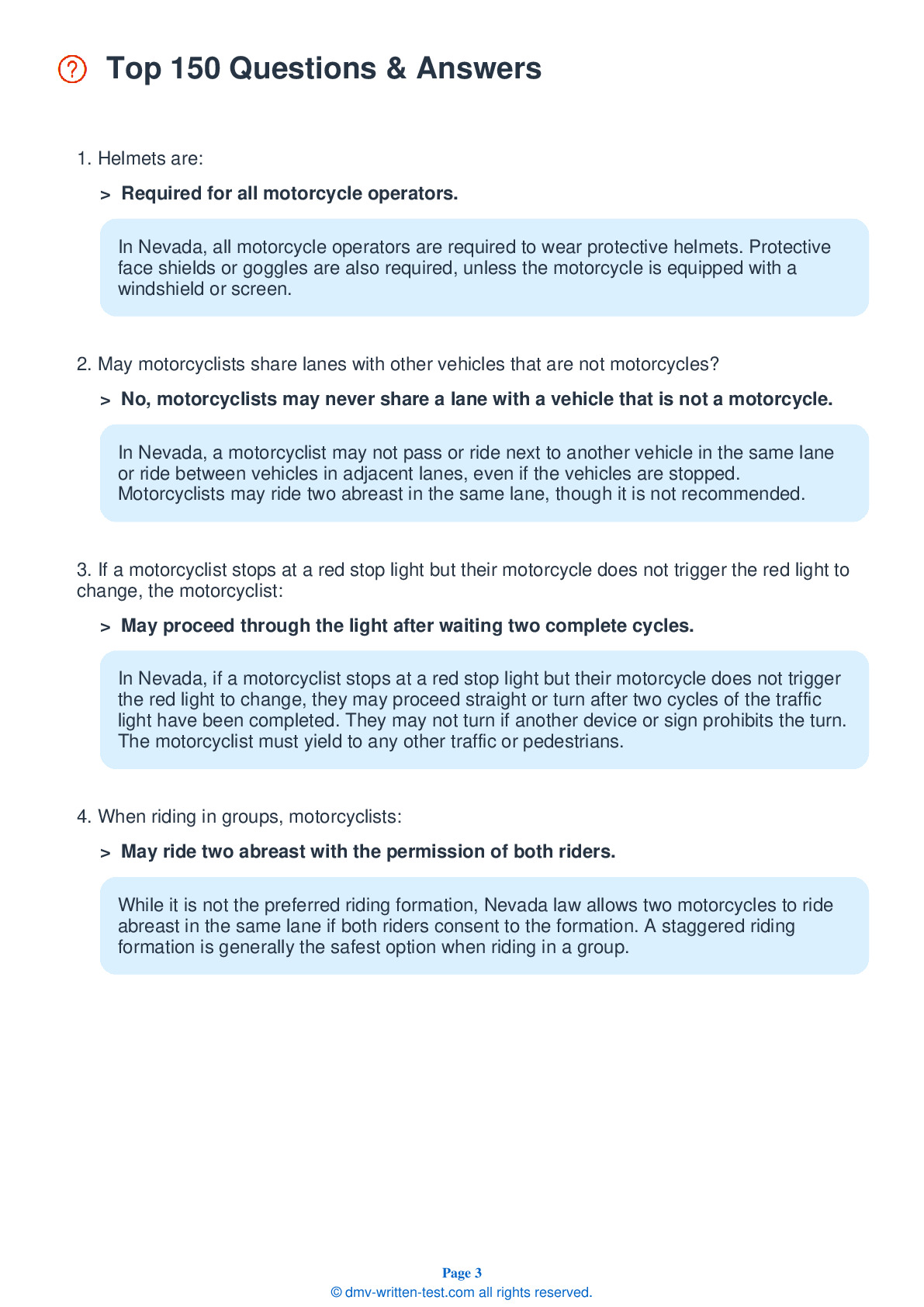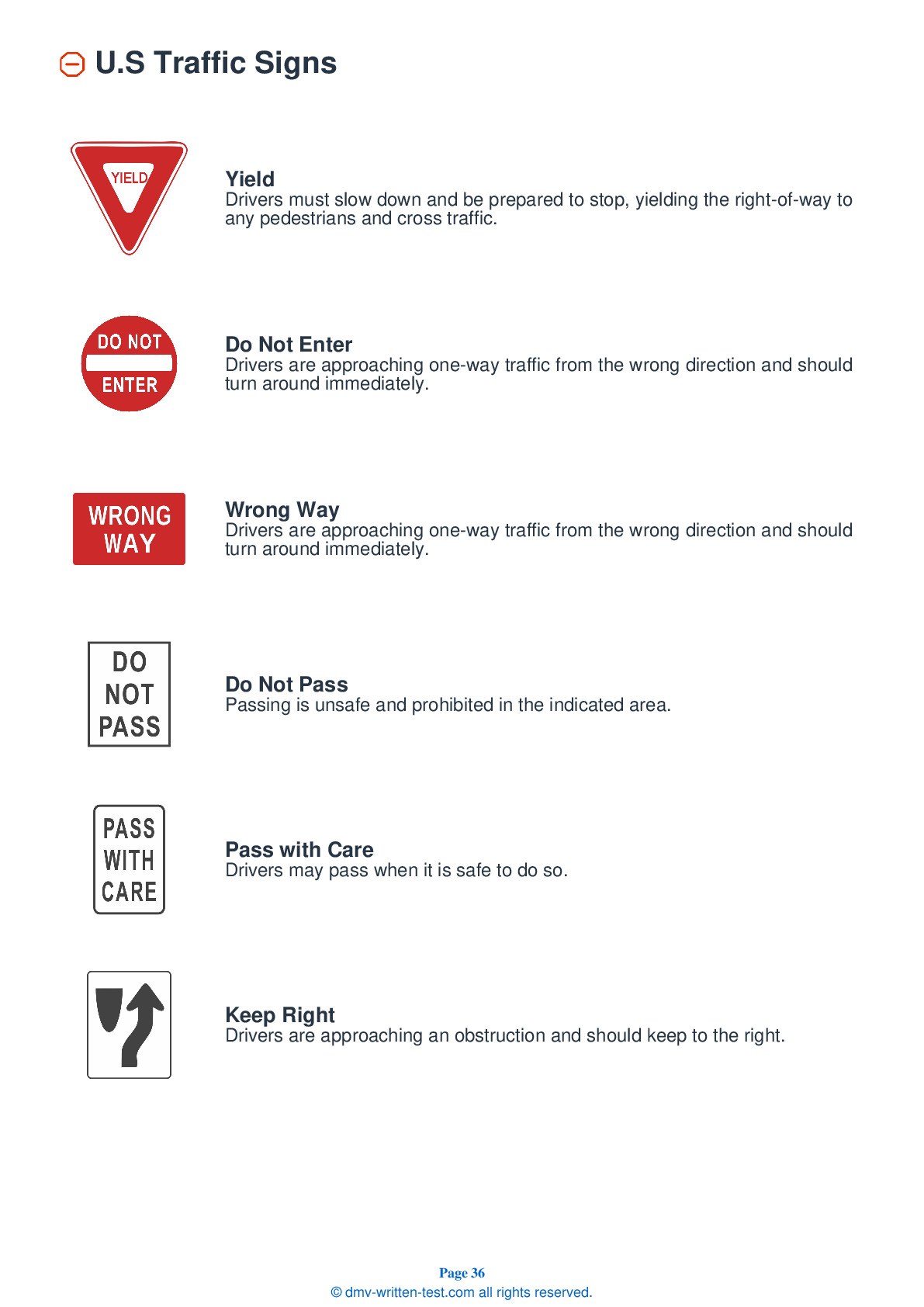2025 Nevada Motorcycle Permit Test 4
The following questions are from real DMV written motorcycle permit tests. These are some of the actual permit questions you will face in Nevada when getting your motorcycle learners permit. Each motorcycle theory practice test question has three answer choices. Select one answer for each question and select "grade this section." You can find this button at the bottom of the drivers license quiz. For a complete list of questions and answers for Nevada please visit https://cheat-sheets.dmv-written-test.com/en/nevada/motorcycle.
Number of Tests
Number of Question
Passing Score
19. To reduce your reaction time, you should:
Explanation
When approaching a high-risk area, like an intersection, cover the clutch and both brakes. This will reduce your reaction time if you need to use them to avoid a hazard.
20. One of the benefits of performing regular maintenance on your motorcycle is that:
Explanation
A motorcycle will continue to ride like new if it is properly maintained and routine inspections become a part of its regular maintenance cycle.
21. Signals on a motorcycle:
Explanation
Because motorcyclists are more vulnerable than the drivers of cars and trucks, appropriate use of signals by motorcyclists is even more important than it is for other drivers.
22. Which of the following is not a piece of protective clothing for a motorcycle rider?
Explanation
When riding, it is safest for a motorcyclist to wear a helmet, eye protection, a jacket, long pants, sturdy boots, and gloves.
23. Riding gloves are often:
Explanation
Gloves designed for motorcycle riding are usually made of leather. In addition to improving your grip, gloves provide protection for a rider's hands and fingers.
24. You should check your tires for all of the following, except:
Explanation
When doing a pre-ride inspection of your motorcycle, you should check the air pressure, general wear, and tread of your tires.
25. An approved helmet:
Explanation




